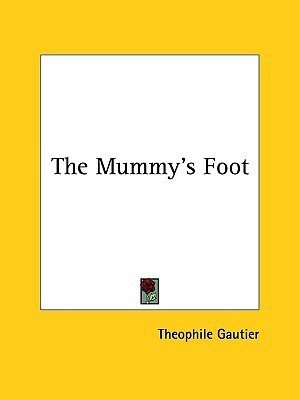
The Mummy's Foot
1840
First Published
3.49
Average Rating
26
Number of Pages
The Mummy's Foot is a short story written by the French author Th�����ophile Gautier. It tells the story of a young Frenchman named Paul who comes across a strange shop in the backstreets of Paris. The shop is owned by an old man who sells a variety of unusual objects, including a mummified foot. Intrigued by the foot, Paul decides to buy it and takes it home with him.That night, he has a vivid dream in which the foot comes to life and leads him on a wild adventure through the streets of Paris. Along the way, he encounters a mysterious woman who seems to be connected to the foot in some way.As the story unfolds, Paul becomes increasingly obsessed with the foot and the strange powers it seems to possess. He begins to experience strange visions and hallucinations, and his grip on reality starts to slip away.The Mummy's Foot is a classic example of Gothic literature, with its eerie atmosphere, supernatural elements, and themes of obsession and madness. Gautier's vivid descriptions and rich imagery bring the story to life, creating a haunting and unforgettable tale of the macabre.THIS 18 PAGE ARTICLE WAS EXTRACTED FROM THE The Omnibus of Adventure Volume Two, by Theophile Gautier. To purchase the entire book, please order ISBN 1419181335.This scarce antiquarian book is a facsimile reprint of the old original and may contain some imperfections such as library marks and notations. Because we believe this work is culturally important, we have made it available as part of our commitment for protecting, preserving, and promoting the world's literature in affordable, high quality, modern editions, that are true to their original work.
Avg Rating
3.49
Number of Ratings
260
5 STARS
17%
4 STARS
30%
3 STARS
39%
2 STARS
11%
1 STARS
3%
goodreads
Author

Theophile Gautier
Author · 45 books
Pierre Jules Théophile Gautier was a French poet, dramatist, novelist, journalist, and literary critic. In the 1830 Revolution, he chose to stay with friends in the Doyenné district of Paris, living a rather pleasant bohemian life. He began writing poetry as early as 1826 but the majority of his life was spent as a contributor to various journals, mainly for La Presse, which also gave him the opportunity for foreign travel and meeting many influential contacts in high society and in the world of the arts, which inspired many of his writings including Voyage en Espagne (1843), Trésors d'Art de la Russie (1858), and Voyage en Russie (1867). He was a celebrated abandonnée of the Romantic Ballet, writing several scenarios, the most famous of which is Giselle. His prestige was confirmed by his role as director of Revue de Paris from 1851-1856. During this time, he became a journalist for Le Moniteur universel, then the editorship of influential review L'Artiste in 1856. His works include: Albertus (1830), La Comédie de la Mort (1838), Une Larme du Diable (1839), Constantinople (1853) and L'Art Moderne (1856)